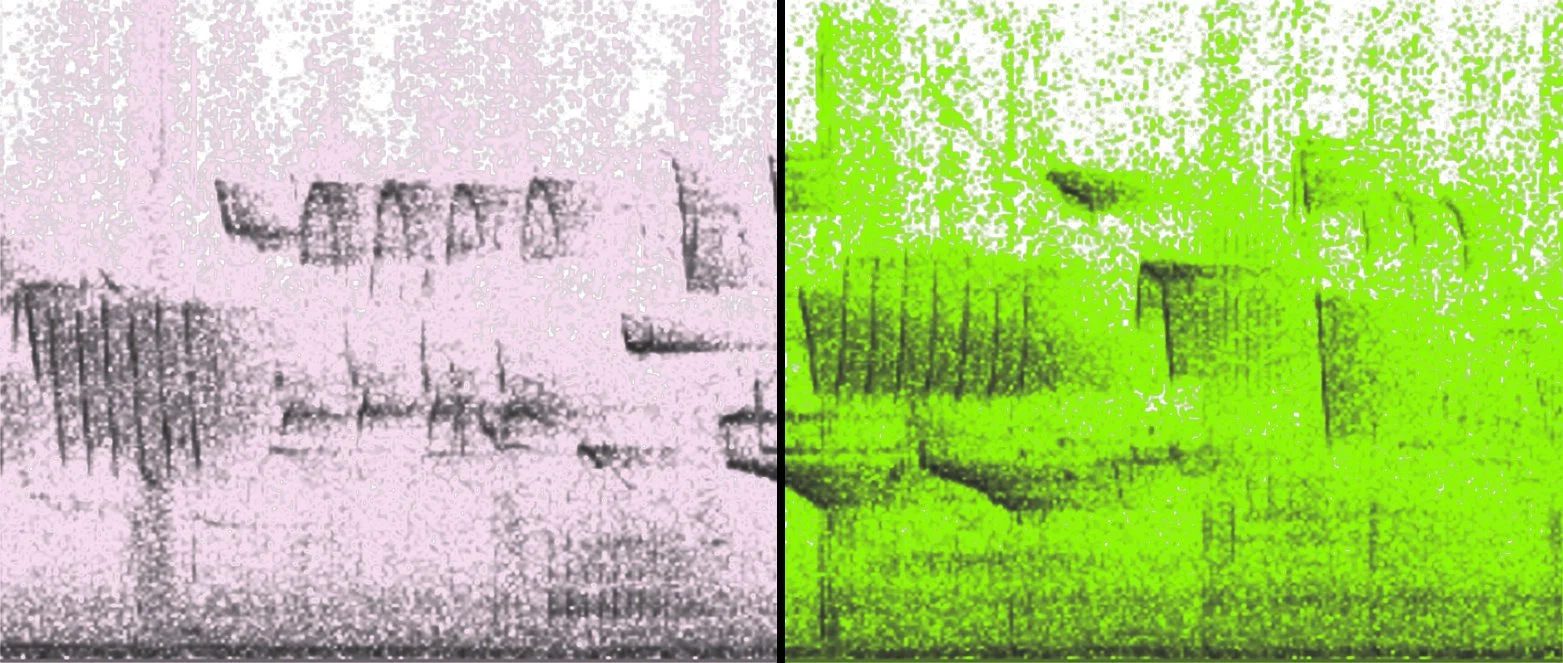Breaking Barriers
Artist
Spending time in Germany earlier this year (Jan-April 2023), away from the familiarity of my home in Seattle, the impact of the sensory context of my creative practice became apparent to me. The winter there was colder and sharper; the wind, louder and stronger; and there were countless birds. From morning until night, I was immersed in the bustle and energy of robins, blackbirds, tits, thrushes, jackdaws, nuthatches, pigeons, chaffinches, wrens, and woodpeckers—singing, chattering, drumming. The possibilities of language were on full display in the cacophony—every day, their sounds reminding me that communication is so expansive, vital, beautiful, as well as layered and conflicting. The work I was creating focused on marine life, but I wondered how much my avian context inspired my aesthetic choices. Now, back in Seattle, I wonder about the plane overhead, that siren, traffic, a pigeon, chickadees.
Mita Mahato is the artist and author of Arctic Play, forthcoming from The 3rd Thing in 2024. Her poetry comics have appeared in places including Ecotone, Iterant, Shenandoah, Coast/NoCoast, ANMLY, and Drunken Boat, as well as in the collection In Between, published by Pleiades and listed in The Best American Comics of 2019. She is the recipient of fellowships and residencies from Loghaven, Hanse-Wissenschaftskolleg (HWK), Helmholtz Institute for Functional Marine Biodiversity (HIFMB), Storyknife, Black Earth Institute, Mineral School, and The Arctic Circle. She lives in Seattle.
Mita Mahato
What is the sensory context of your creative practice?
Invitation
Choose a location. You can stay inside, at home, in class, at work. You can go for a walk. You can go to a grocery store you frequent. A park. The limitation is that the location should not be out of your way; it should be a place that is part of your “everyday.” You should also take nothing to write with. Nothing to draw with.
Break a barrier. Find a way to perceive the space slightly differently than you usually do. If you’re staying inside, open a window or sit in a spot where you never sit. If you’re going for a walk, slow your pace. If you’re at the store, find a safe location in which to linger.
Listen. You can close your eyes or keep them open—whatever feels most comfortable. But I encourage you not to rush to identify the source of a sound. In fact, try to hear the sounds and sit with them before locating their sources. Notice the associations your brain makes and see if you can quiet the inner voice that says “it sounds like ______” or “that is a ______.” Instead, consider how the sounds “feel” in the resonating chamber that is your head. What qualities do they have? Are they sharp? soft? muffled? melodious? repetitive? high? low? How many sounds are in the field and how do they harmonize with or interrupt each other? This listening step can take as long as you like.
Melt. Determine an appropriate way to transition to whatever is next for your day. For some, you will slip into pattern and routine. For others, there might be a need to reflect, take mental notes, stretch, soothe. I like touching surfaces—the bark of a tree, the glass of a window, cement underfoot, thumb to fingers.
Add-ons
Repeat these steps whenever, wherever. Eventually, this practice won’t feel like steps to follow, but part of an everyday habit of deep listening.
Take someone with you and listen together.
I said no writing or drawing tools, but you can record the sounds. My frequent tool when I was in Germany was the Merlin bird-identifying app, and I cherish the recordings I made as audio memories. Just try not to let the process of recording or identifying the sounds get in the way of listening to them in the moment.
